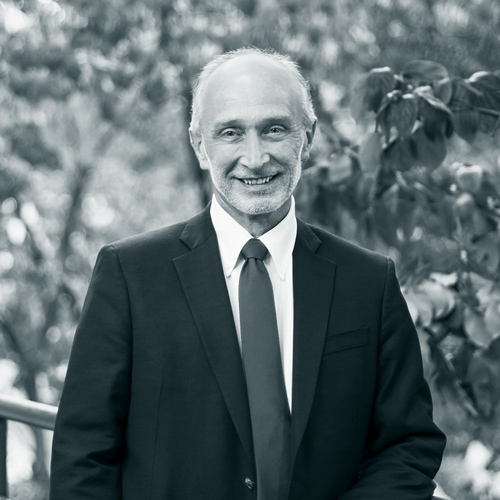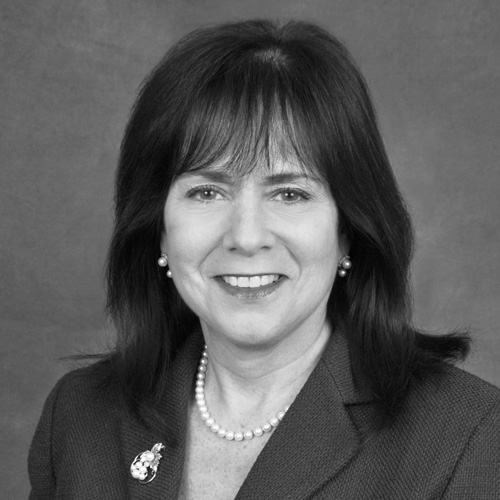Over the course of her twenty-plus years in healthcare, Nancy Vish has learned that everything is connected. As the president and chief nursing officer at Baylor Jack and Jane Hamilton Heart and Vascular Hospital in Dallas, her mission of providing top-notch care means more than just treatment at the facility.
“Our impact on the community is also about making efforts to educate and be involved in preventing heart disease in the first place,” says Vish, who joined Baylor Health Care System, now known as Baylor Scott & White Health, in 1996 and served as VP of clinical operations and chief nursing officer when Baylor Hamilton Heart and Vascular Hospital opened in 2002.
Her approach is in line with the concept of population health, which encompasses health outcomes of a particular group of people and the distribution of outcomes within the group. Vish and other healthcare providers who adhere to this concept understand that they must continue to track patients long after they walk out the door.
For instance, Vish says Baylor Hamilton Heart and Vascular Hospital works closely with its physicians’ office practices to keep tabs on patients’ follow-up visits there. It also creates forums for patients to share their experiences and tracks all the procedures administered to these patients with a cardiovascular database system.
Touching Hearts
Baylor Jack and Jane Hamilton Heart and Vascular Hospital is the first North Texas hospital dedicated to treating heart and vascular patients. It has six cardiac catheterization laboratories, four electrophysiology laboratories, four surgical suites, and a cardiac rehabilitation center.
President and chief nursing officer Nancy Vish says she and her employees, however, are driven to help the community to never have to use any of it. Hospital employees, Vish included, are heart disease activists.
“We recently did CPR training with more than five thousand high school kids in a local school district and talked about signs and symptoms of heart attacks and when to call 911,” Vish says. “Our feeling is that the training will encourage them to talk to their families.”
“We do a telephone follow-up on the first or second day after their discharge to learn about their progression into the home,” she says. “We collect data from patients in our cardiac rehabilitation program department to find out how we can understand what their challenges and needs are at that stage.”“Data is power,” Vish says. “The faster we can get data to the physician offices and accessible to the physicians, the more we can impact decision making in a positive way.”
The same goes for patient feedback. Vish is constantly looking for ways to gather and act on it.
Deep patient knowledge has helped Vish and her team develop new programs and targeted services.
“We learned patients who had defibrillators were afraid to go out of the house,” Vish says. “So, we started a program called Wired for Life, in which we had a psychologist and nurses talk to those patients about what it’s like to live with a device.”
Data has also helped Vish recognize more stops along the continuum of care. Dialysis centers, for instance, now have access to data from the hospital’s cardiovascular database. Vish and her team have also educated those employees on what the hospital does and how dialysis centers fit into the continuum.
Similarly, the system’s cardiac rehabilitation program department has also become more enmeshed in the continuum. Rehab clinicians see patients for twelve weeks and now take a more holistic approach. Not only do patients progressively increase their tolerance to exercise in rehab, but they also learn how to live healthy lifestyles.
Vish, who serves on the board of the Dallas chapter of the American Heart Association, has even extended that kind of education program to children. She says research has shown an increase in child obesity in North Texas over the past few years, which has prompted the hospital to work with local groups that promote active lifestyles to kids.
“The point is there isn’t just one silver bullet to heart disease,” Vish says.
A rigorous mission requires a rigorous search for talent to add to Vish’s leadership team, and through the interview process, she makes sure to surround herself with people who are just as dedicated as she is. Applicants go through several layers of interviews, during which they meet with up to twenty different employees.
Even so, Vish likens the process to speed dating. When someone is the right fit, she knows it immediately.
“We all know just based on our own education that there are some people who don’t want to strive to be at 100 percent all the time,” Vish says. “That character won’t be successful at this organization. We have a very engaged, high-performing team, and when they came here, we were very clear what the commitment was to work at this facility.”
Those who get hired quickly see that the commitment goes both ways. The hospital offers a number of employee growth opportunities, which range from continuing education programs to support for publishing and presentation opportunities.
“We have a very engaged, high-performing team, and when they came here, we were very clear what the commitment was to work at this facility.”
“For almost two years, we’ve had a consultant here every Thursday who has worked in the industry on leadership development,” Vish says. “She has been tasked to develop leaders, provide tools to help new managers excel in leadership, and facilitate counsel chair development.”
Meanwhile, Vish has nurtured an environment in which feedback from all employees is valued. The hospital has earned a number of accolades for employee engagement because it constantly draws input with survey questions such as, “What’s stupid around here?”
“You have to be mature to be able to accept feedback on that question,” Vish admits. “The impact is worth it. You name it, there’s been something that has been enhanced or improved from the answers we’ve gotten. When you empower people to feel like they can give you their honest input, it’s amazing what you can do.”
Vish and Baylor Hamilton Heart and Vascular Hospital have already done the amazing: uniting healthcare providers of all kinds in North Texas behind not just treating heart disease, but also preventing it. Now, they’re taking the next steps to build on that foundation and to make heart disease history.

